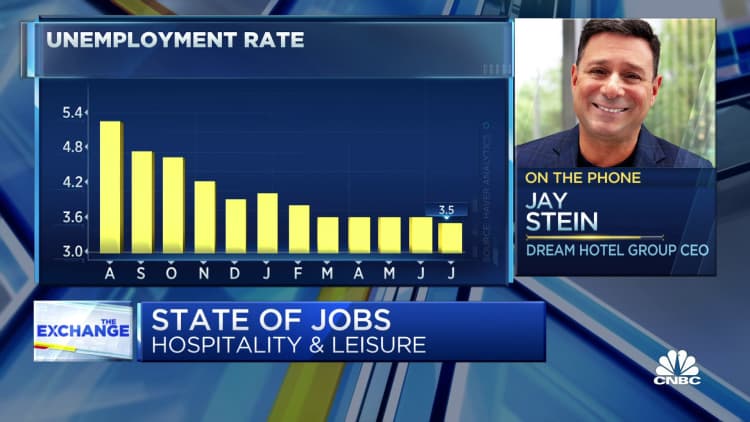Employer demand for workers remains historically strong — and that means workers have the power to negotiate for better pay, benefits and other aspects of their jobs, according to economists.
There were more than 11.2 million job openings in July, an increase of 199,000 from June, according to a U.S. Department of Labor report issued Tuesday.
Job openings are a barometer of the need for workers. The jump in July was the first since March, when they hit about 11.9 million, a record.
More from Personal Finance:
Mortgage rates will fall to 4.5% in 2023: Fannie Mae
64% of consumers are worried about 'shrinkflation'
Borrowers could get back up to $300 a month from student loan forgiveness
What's more, the number of voluntary quits measures workers' willingness or ability to leave a job, and therefore serves as another measure of worker power. Most workers who leave voluntarily don't quit the labor force altogether but do so for another job, according to economists.
Quits in July declined from the prior month by 74,000 to 4.2 million, according to the Labor Department. While it was the fourth consecutive monthly decrease, voluntary quits remain elevated by historical standards, suggesting the Great Resignation trend isn't over, economists said.
Meanwhile, the layoff rate was unchanged in July and remains near historical lows. The 3.5% national unemployment rate ties early 2020 for the lowest jobless rate since 1969.

Taken together, workers have ample choices in the job market and "remain in the driver's seat," according to AnnElizabeth Konkel, a labor economist at the job site Indeed.
"When they have those choices, it certainly gives them an upper hand," Konkel said. "Maybe that means negotiating a higher wage or flexibility or whatever types of benefits a job seeker might be interested in."
Workers have negotiating power
Workers have had that negotiating power since early 2021. Job openings and quits surged to record levels as Covid-19 vaccines were rolled out broadly and the U.S. economy reopened.
Businesses raised wages at the fastest pace in decades to remain competitive in a challenging recruiting environment. That trend was more pronounced for individuals who switched jobs relative to those who stayed with their current employer.
When they have those choices, it certainly gives them an upper hand.AnnElizabeth Konkeleconomist at Indeed
However, stubbornly high inflation is pushing the Federal Reserve to raise borrowing costs for individuals and businesses. The central bank is doing so to slow the economy and the labor market in an effort to rein in fast-rising consumer prices.
While the job market remains hot for workers, that likely won't persist — though it's unclear when and to what extent things will cool off.
"As the fall approaches, I think we'll see a slightly different story," said Elizabeth Crofoot, a senior economist at Lightcast, which tracks labor market data.
"The quits rate coming down just a little bit ... means workers may be a little more hesitant than before to switch jobs," she added.



